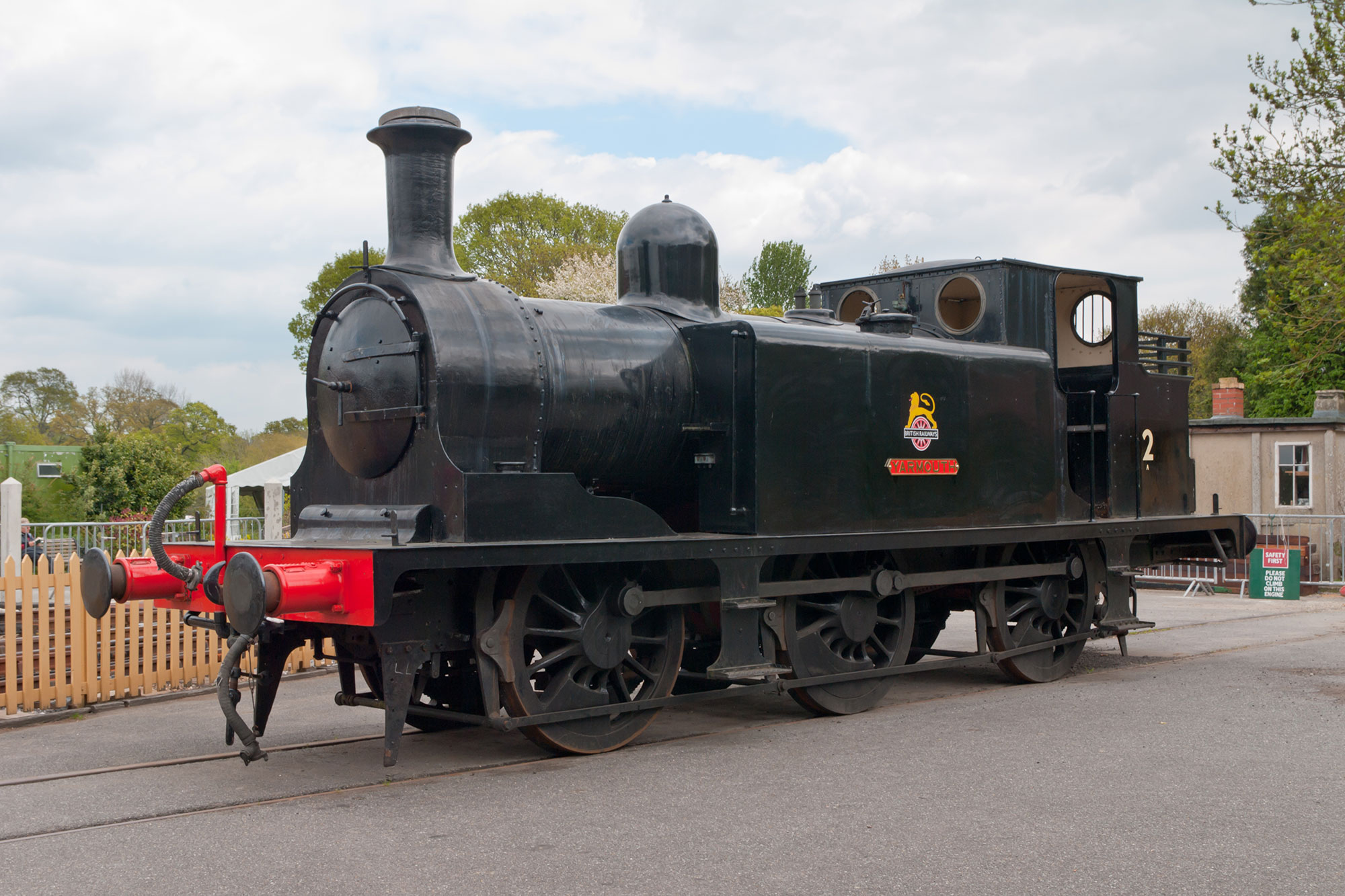Built: 1877
Wheel arrangement: 0-6-0T
Current status: Awaiting overhaul and on display in our Train Story Discovery Centre
In British Railways livery as No.32110, on arrival at Havenstreet in October 2012. The E1 has assumed the identity of W2 ‘Yarmouth’ on the Isle of Wight Steam Railway.
A member of the London, Brighton and South Coast Railway’s E1 Class, No.110 ‘Burgundy’ emerged from Brighton Works in March 1877 and was allocated to Brighton depot. Built to the design of William Stroudley, the E1 0-6-0 tank locomotives were designed to fill the need for short-distance goods locomotives. A total of 78 locomotives of this class were built, with each named after places from all across Europe.
No.110 was built with a copper-capped chimney, crosshead water pump and wooden brake blocks and a boiler with a working pressure of 140 p.s.i. Around 1892, Westinghouse air brakes were fitted and by the mid 1890’s No.110 was based at Three Bridges, Sussex. After 1905 No.110’s livery was changed from green to black and in 1923 it was taken into Southern Railway stock and renumbered B110. The engine was noted at Tonbridge during the summer of 1925.

Withdrawn from service in February 1927, No.110 was then sold to the Cannock and Rugeley Colliery Company. A new boiler to a different design was made and fitted by Bagnalls of Stafford, resulting in a change of appearance (especially around the cab) and an increase in power due to an increased boiler pressure of 175p.s.i. At the Cannock Wood Colliery No.110 was renumbered as No. 9, using the inverted number plate from No. 6, an 1876 engine which had been sold.
As CRC No.9 the engine gave many years of good service, latterly in black livery, and became a firm favourite with the CRC enginemen due to its superior power over more modern machines. It was used extensively on the trip workings to Hednesford Canal Basin and the Exchange sidings on the ex-London and North Western Railway’s Cannock to Rugeley line.
Withdrawn for a second time in 1963, the engine was sold to the Railway Preservation Society and stored at Hednesford until 1970 when it moved to the Chasewater Railway. There it remained until sold to three members of the East Somerset Railway and moved to it’s base at Cranmore in September 1978.
A general overhaul was commenced in 1986 and it returned to active service in 1993, painted in Southern Railway olive green livery and numbered B110. In 1996 B110 could be found transporting visitors to the Festival of the Sea on Bristol’s Harbour Railway. Unfortunately, firebox problems resulted in B110 being prematurely withdrawn from traffic in 1997.
Acquired by the Isle of Wight Steam Railway in 2012 as part of a deal which also saw Ivatt 2MT 2-6-0 46447 move to the East Somerset Railway. A generous bequest to the Isle of Wight Steam Railway funded the purchase and eventual restoration of the locomotive. In accordance with the wishes of the benefactor, the move to the Isle of Wight means yet another change of identity; the E1 is now known as W2 ‘Yarmouth’ recreating a locomotive that used to run on the island.
‘Yarmouth’ will require a new boiler and an extensive overhaul before returning to traffic. In the meantime she remains on display in our Train Story Discovery Centre.
Click HERE to see the next locomotive history. Click HERE to return to the main locomotives page.